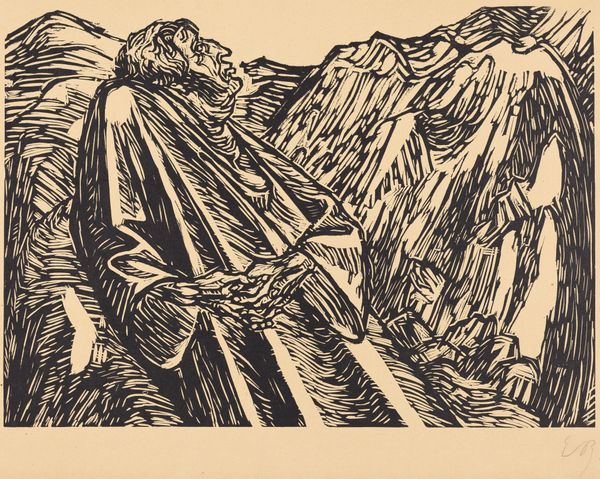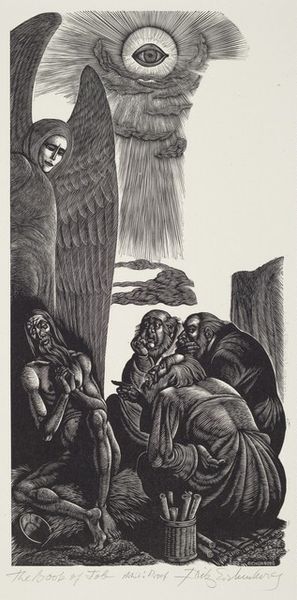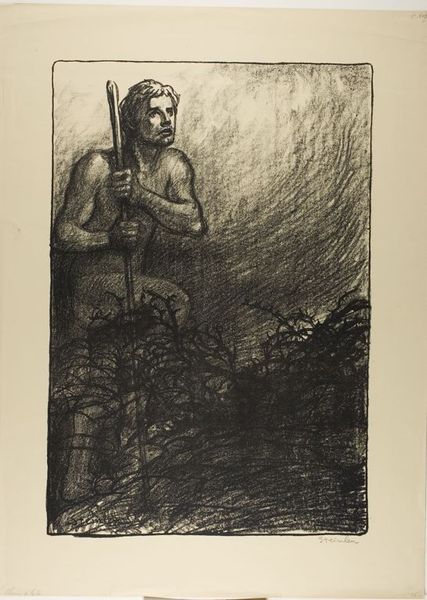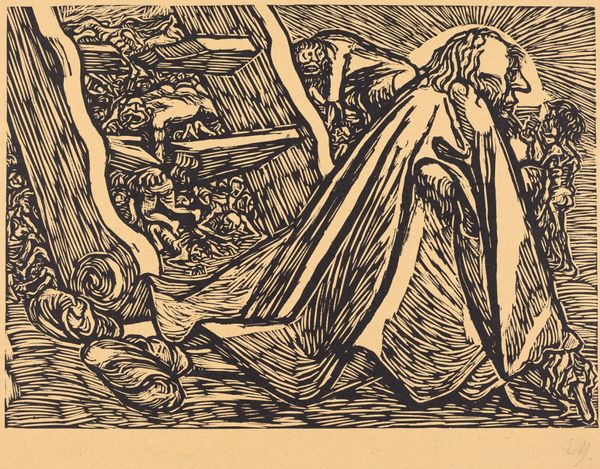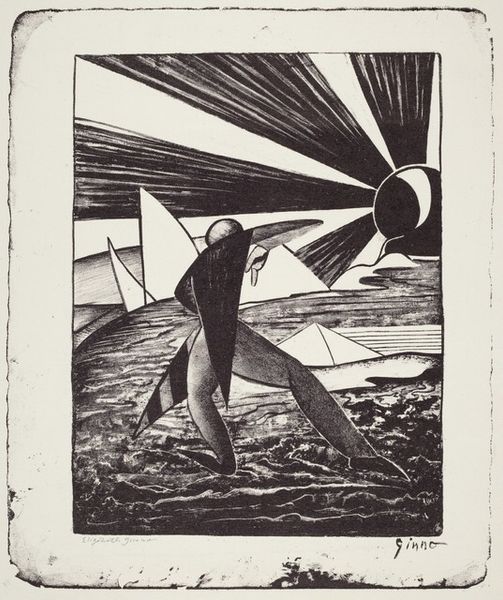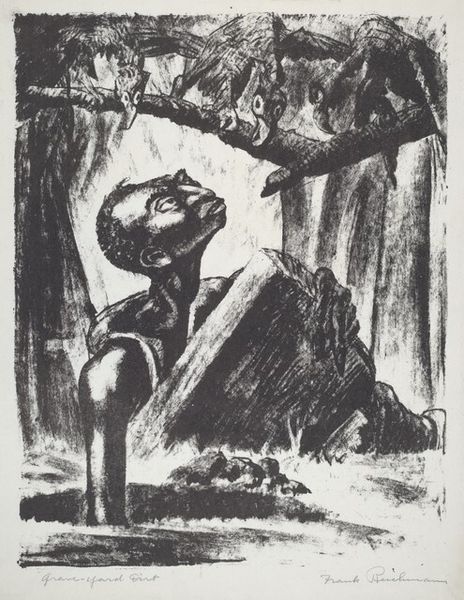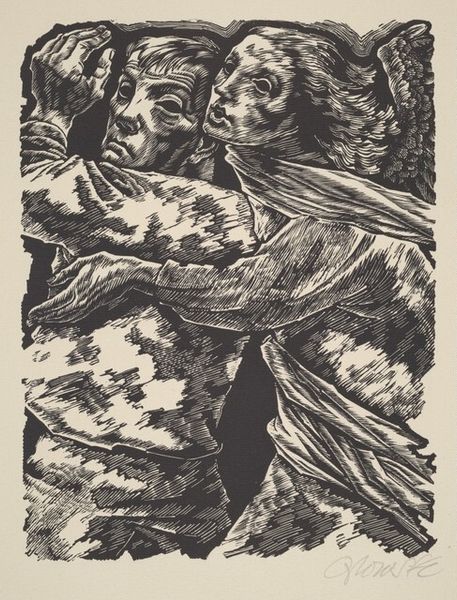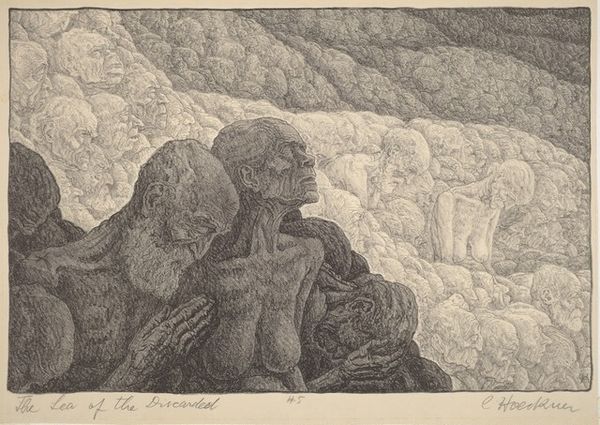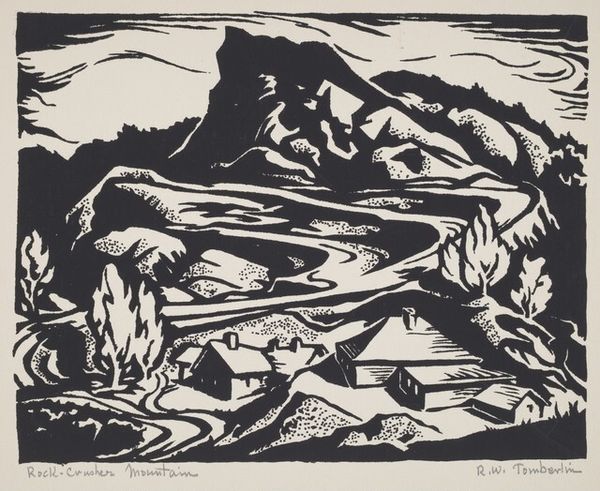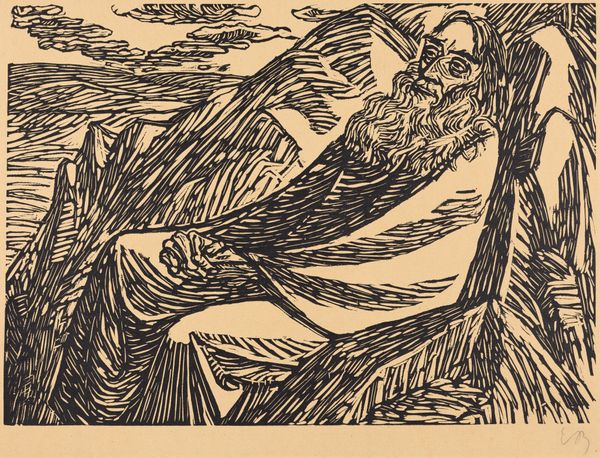
print, woodcut
#
portrait
#
art-deco
# print
#
landscape
#
caricature
#
geometric
#
expressionism
#
woodcut
#
portrait drawing
Copyright: National Gallery of Art: CC0 1.0
Curator: Rockwell Kent’s 1924 woodcut, “Voyaging,” offers a powerful and rather stark composition. What strikes you initially? Editor: A distinct sense of monumentality, achieved through very disciplined visual language. The figure and the surrounding landscape exhibit bold simplification and stark geometry. The artist clearly relishes formal economy here. Curator: Absolutely. Kent’s engagement with simplification has ties to the art deco aesthetics popular at the time, which itself pulls from sources such as Cubism and even ancient forms, like Egyptian art. The stoic pose evokes ancient statuary, emphasizing permanence. He sought to forge a uniquely American, and accessible, visual language. Editor: One sees that ambition to create a symbolic Everyman against a primal, rugged landscape. There is certainly a social dimension too. This image comes on the heels of World War I, and a renewed exploration of what it meant to be human. We should consider Kent's socialism here as well, that shaped much of his worldview and by extension, his imagery. Curator: His reduction of form does so much for his message, doesn’t it? The striations across the figure and the rocks emphasize form, while simultaneously flattening them into near abstractions. The mountains are reduced to geometric shapes that nonetheless still convey grandeur. This blending of representation and abstraction seems deliberate. Editor: I agree. This reduction and simplification could be linked to anxieties during a time of technological change and rising social inequality. Kent attempts a myth-making in line with, say, Diego Rivera’s political frescoes during this period. These simplified figures can also suggest, in turn, a type of primitive, timeless quality. The figure appears self-possessed, though solitary. Curator: And that feeling is what truly carries. One could interpret the title, "Voyaging," both literally and metaphorically. Is he poised for a physical journey, or is the voyage an internal one? Kent's woodcut presents a meditation on man and nature, both together and within themselves. Editor: A quiet contemplation of humanity's place in the world then, wrought from carefully considered geometry and social urgency. Curator: Yes, his focus on essential forms emphasizes our enduring relationship with the environment, both inspiring and challenging.
Comments
No comments
Be the first to comment and join the conversation on the ultimate creative platform.
